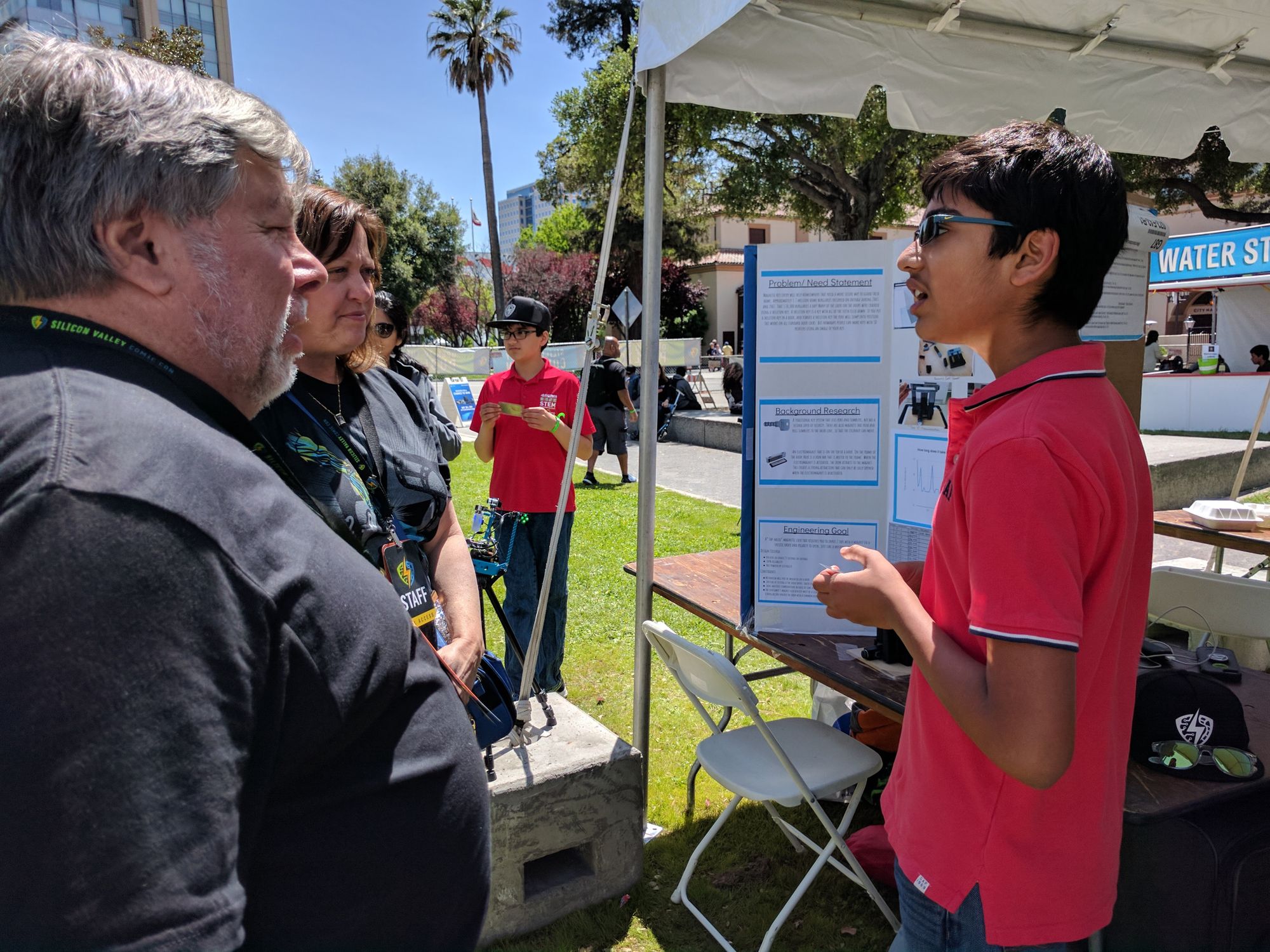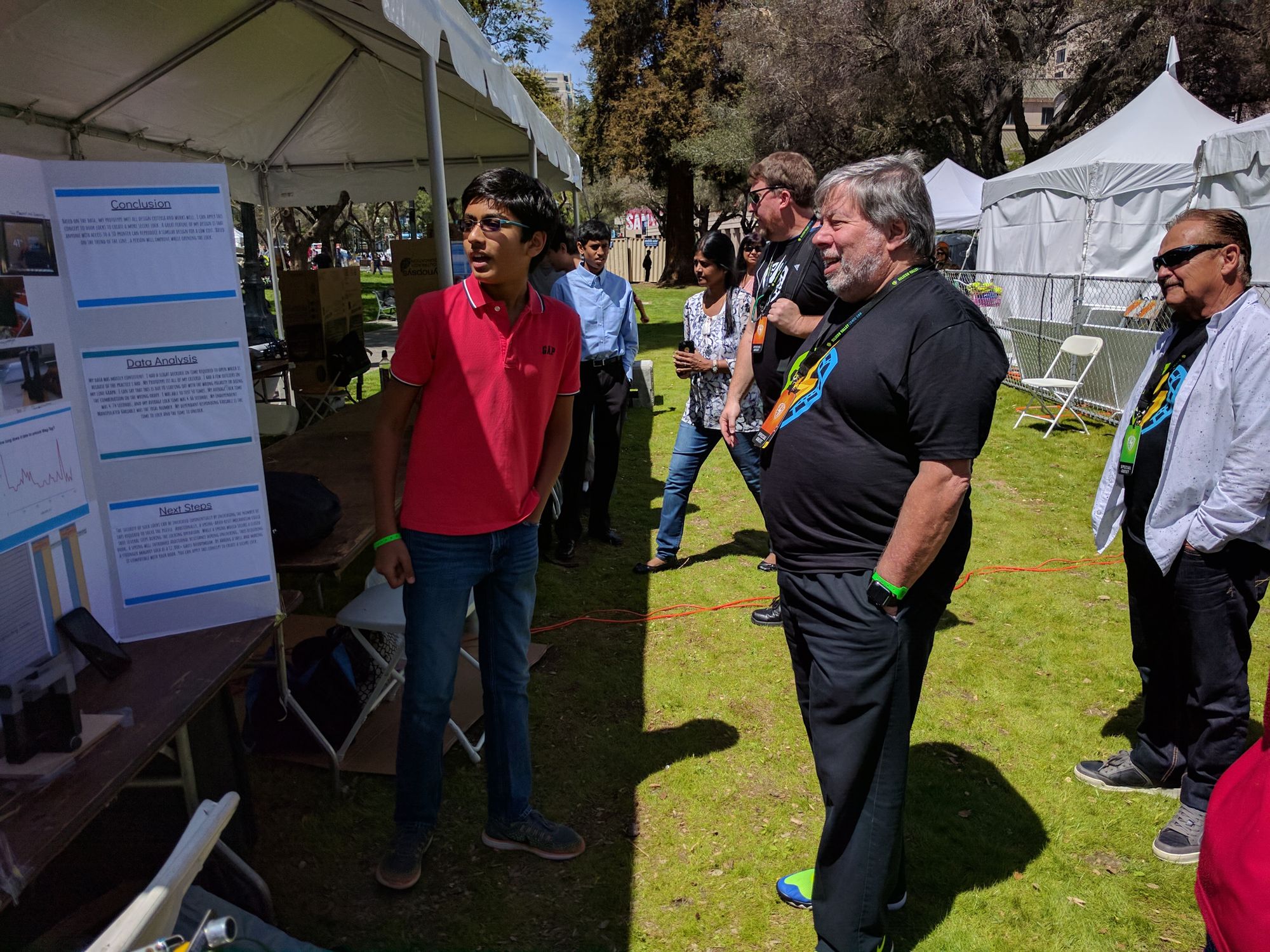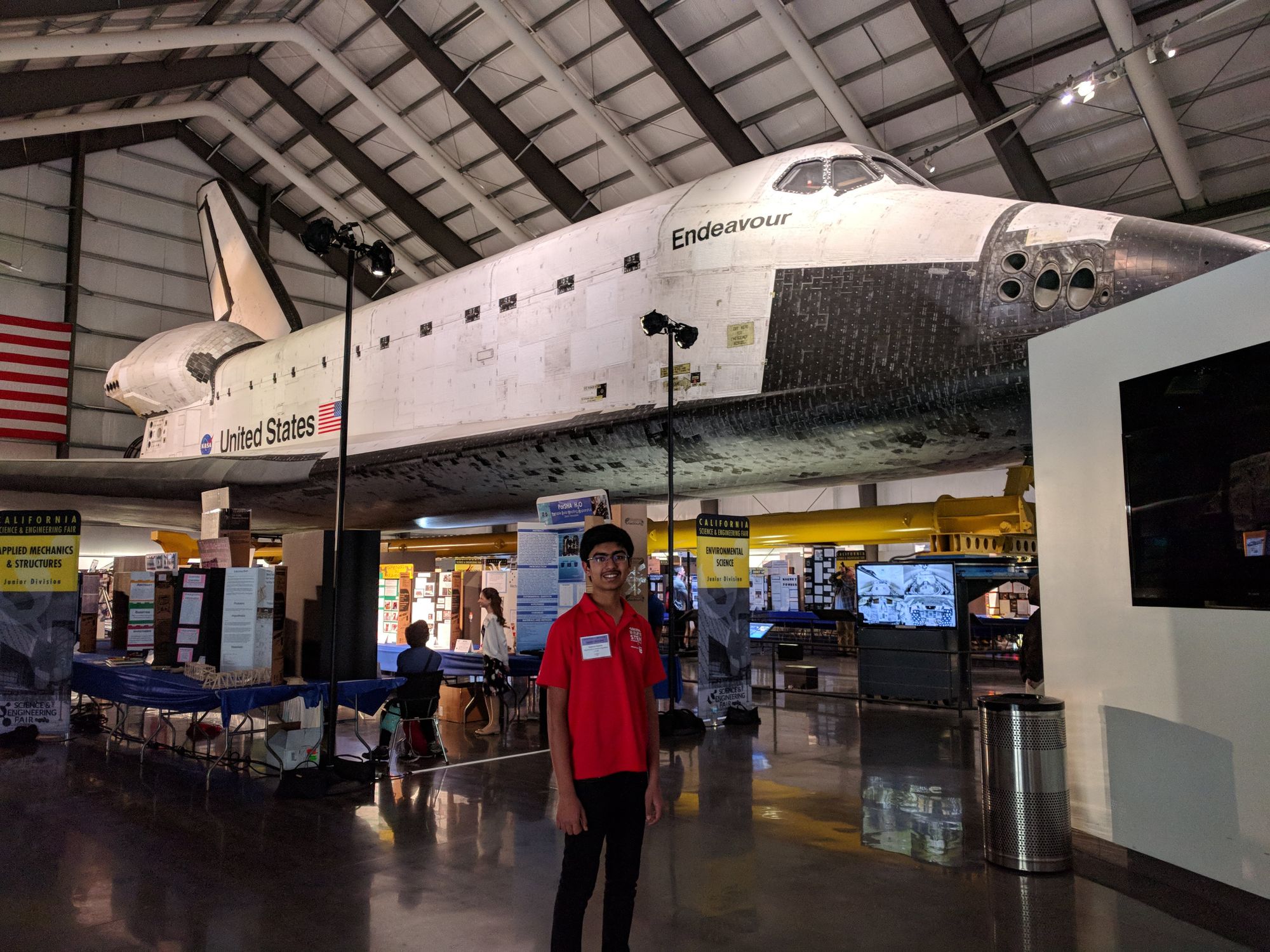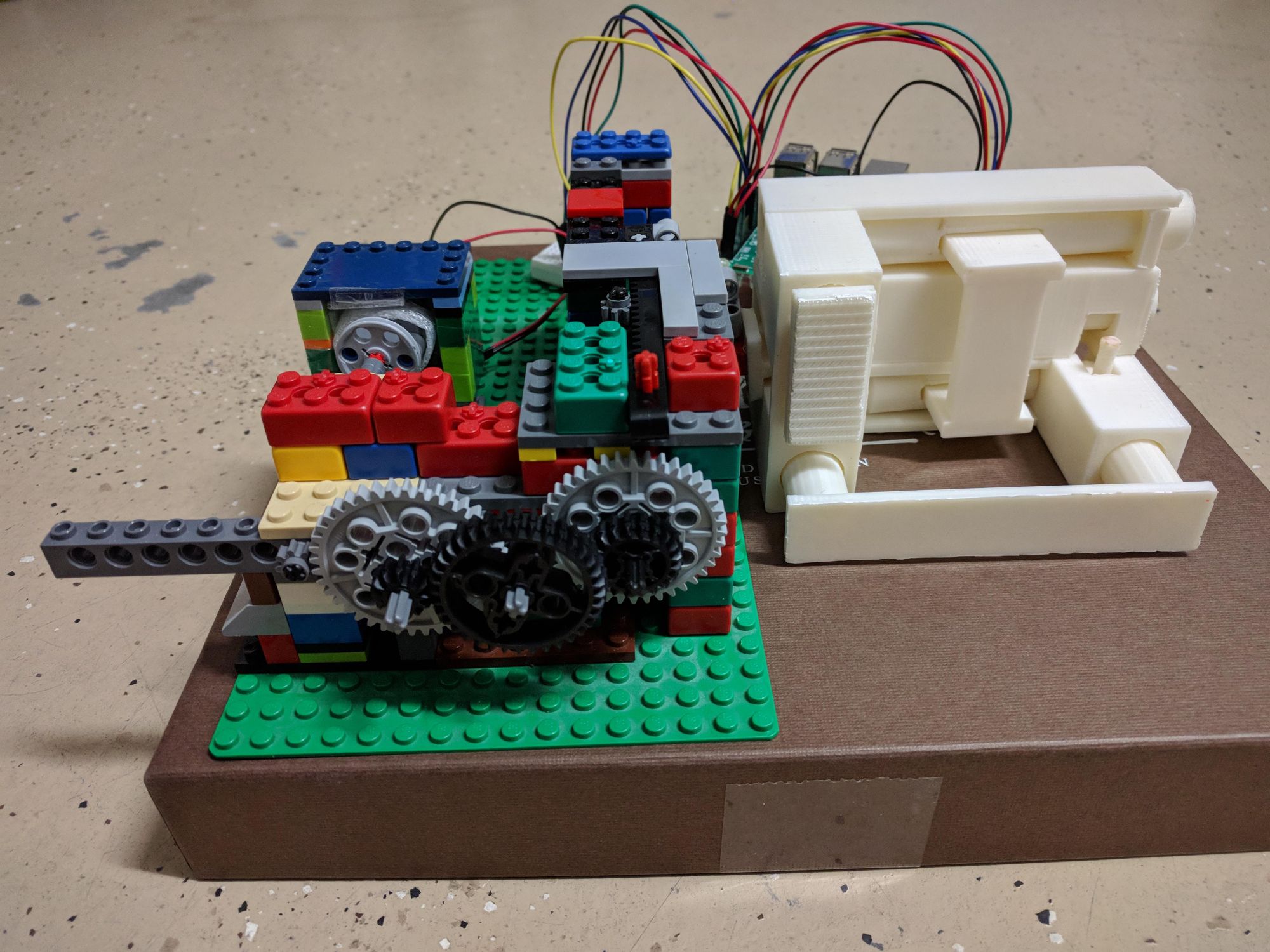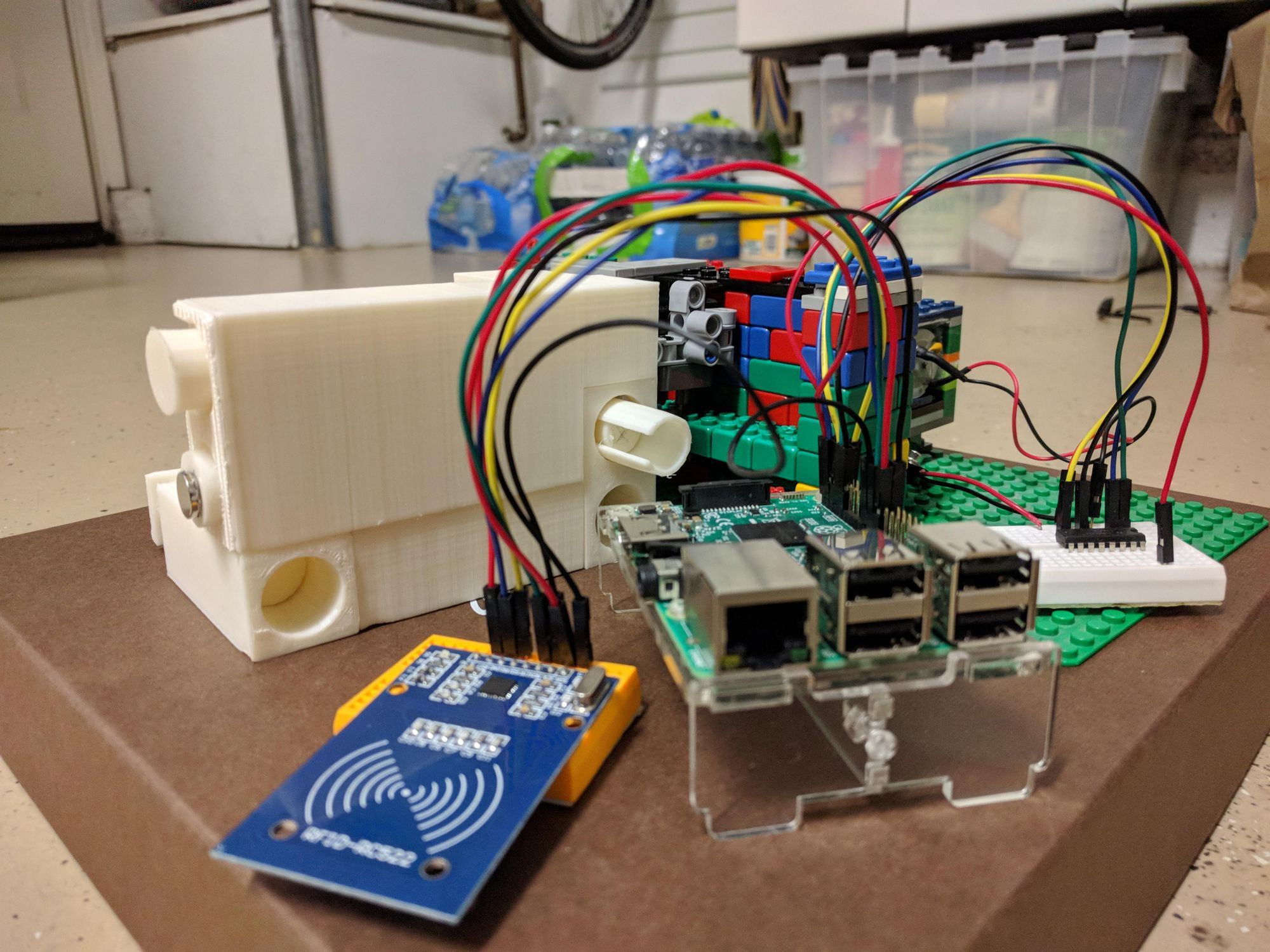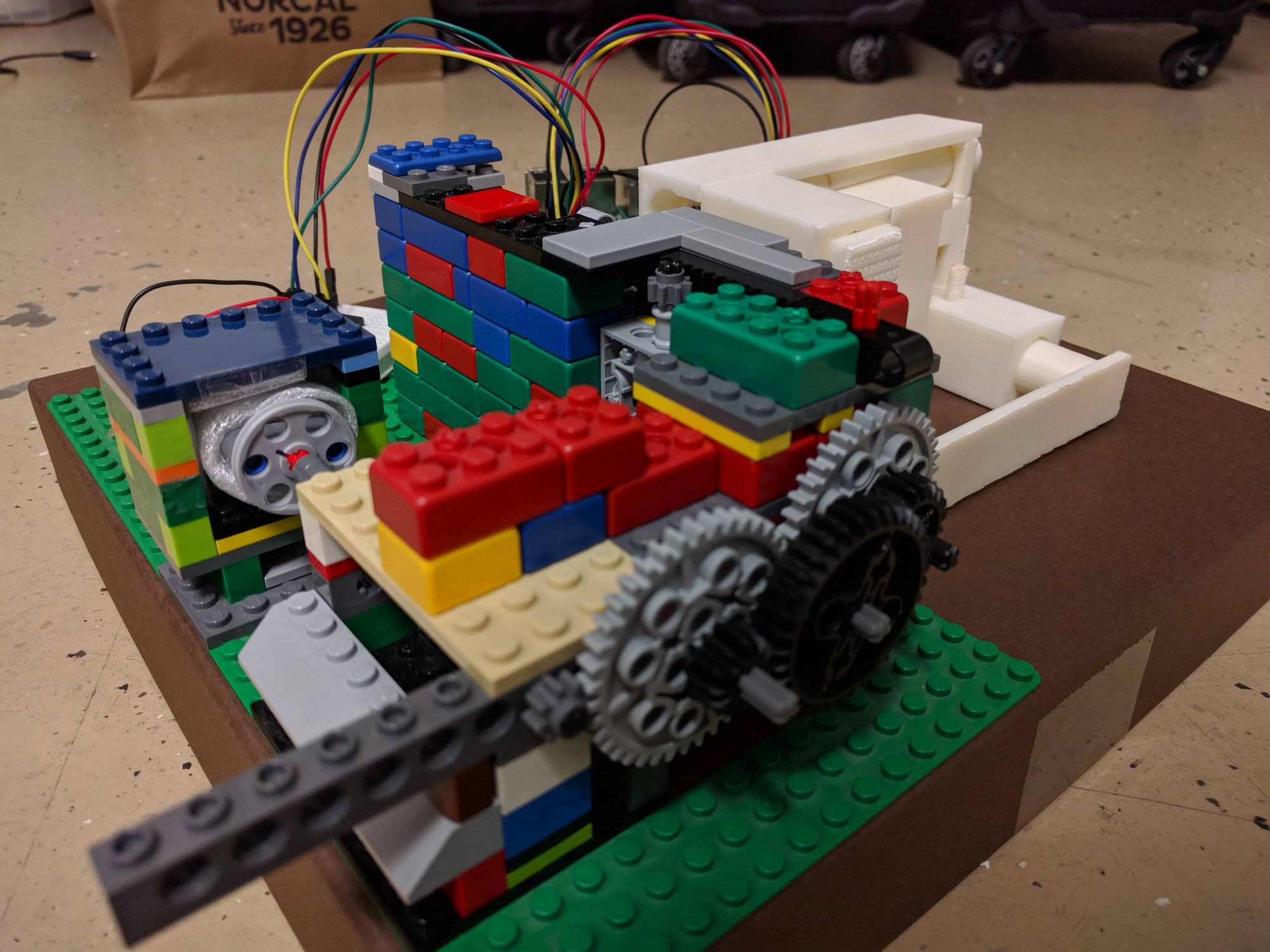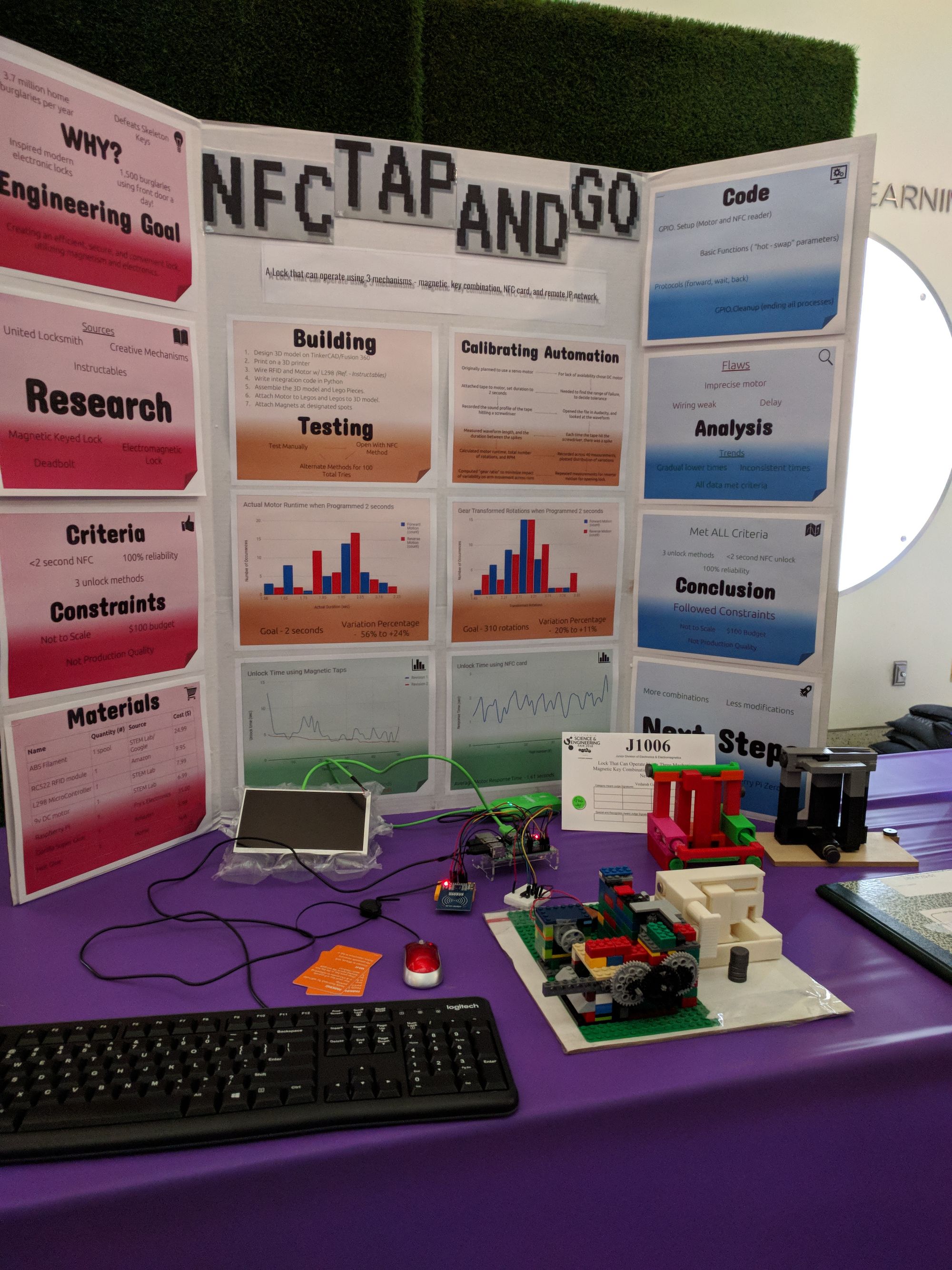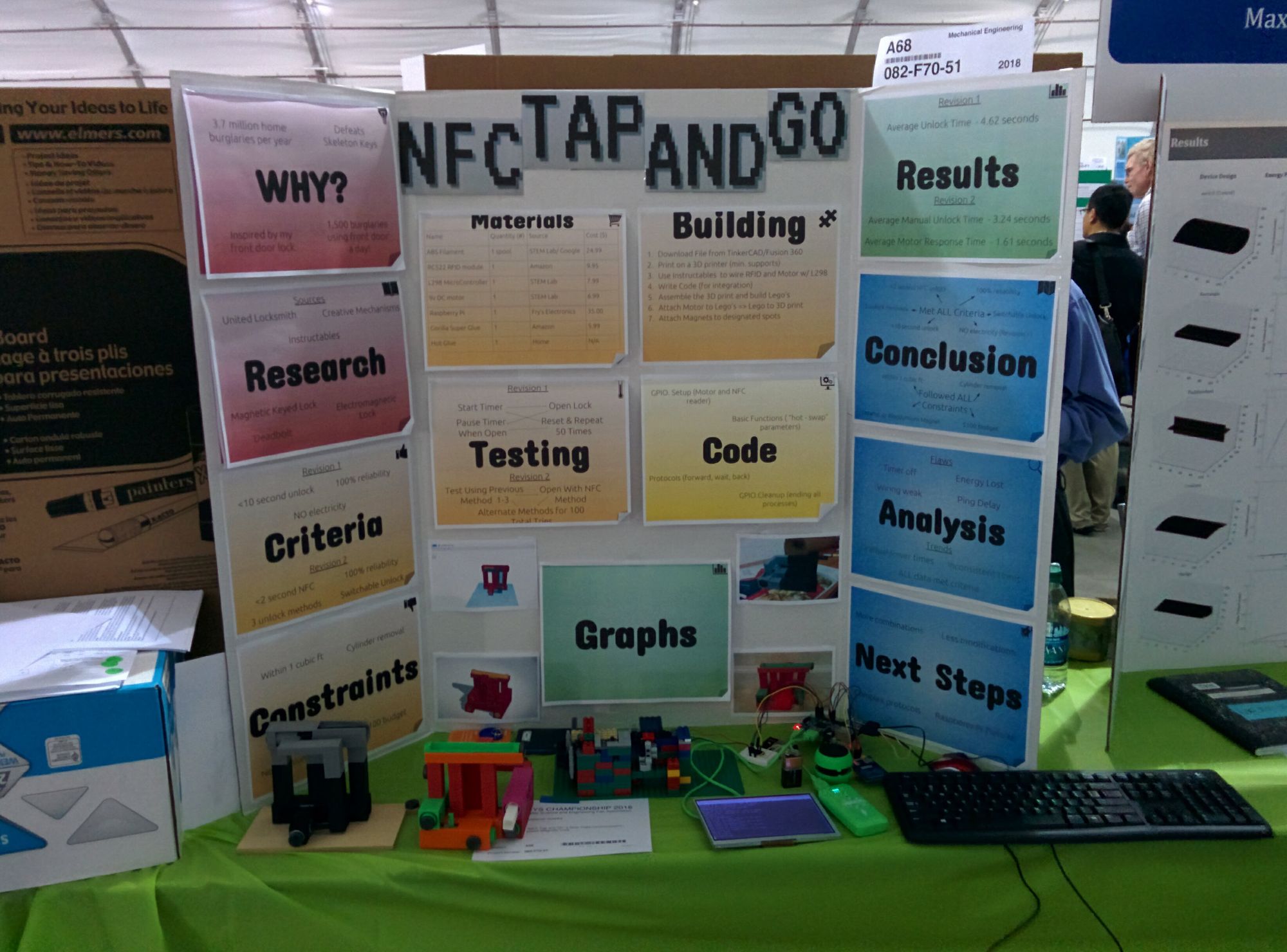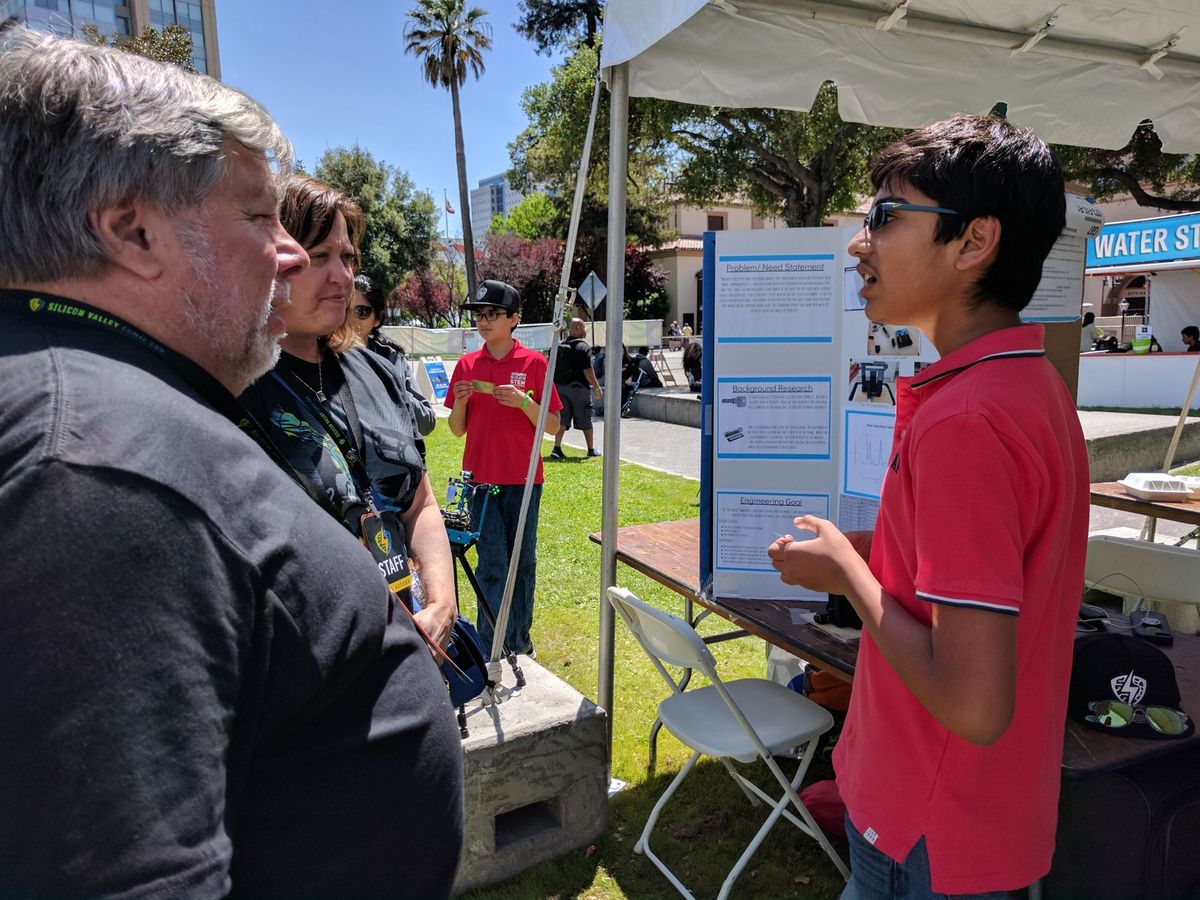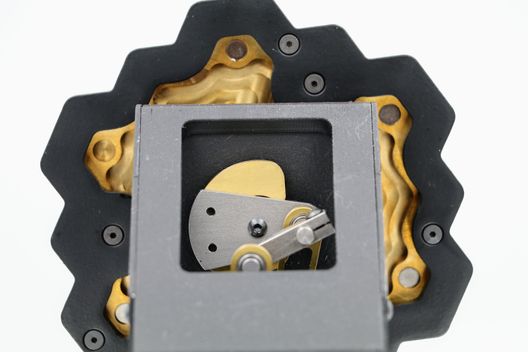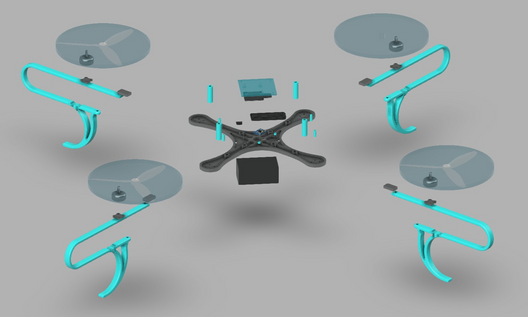I designed, 3D printed, and assembled a mechanical lock that operates in 3 ways: (1) mechanically using combination of magnetic 'taps'; (2) an NFC card tapped on an NFC reader connected to Raspberry Pi; (3) Remote login from a phone or computer
I presented my lock to Steve Wozniak (I still can't believe it!). I got Honorable Mention at State Science Fair. I won 1st place at Synopsys Science Fair and got a "medal of innovation" by the US Marine Corps.
(More Photos @ the End)
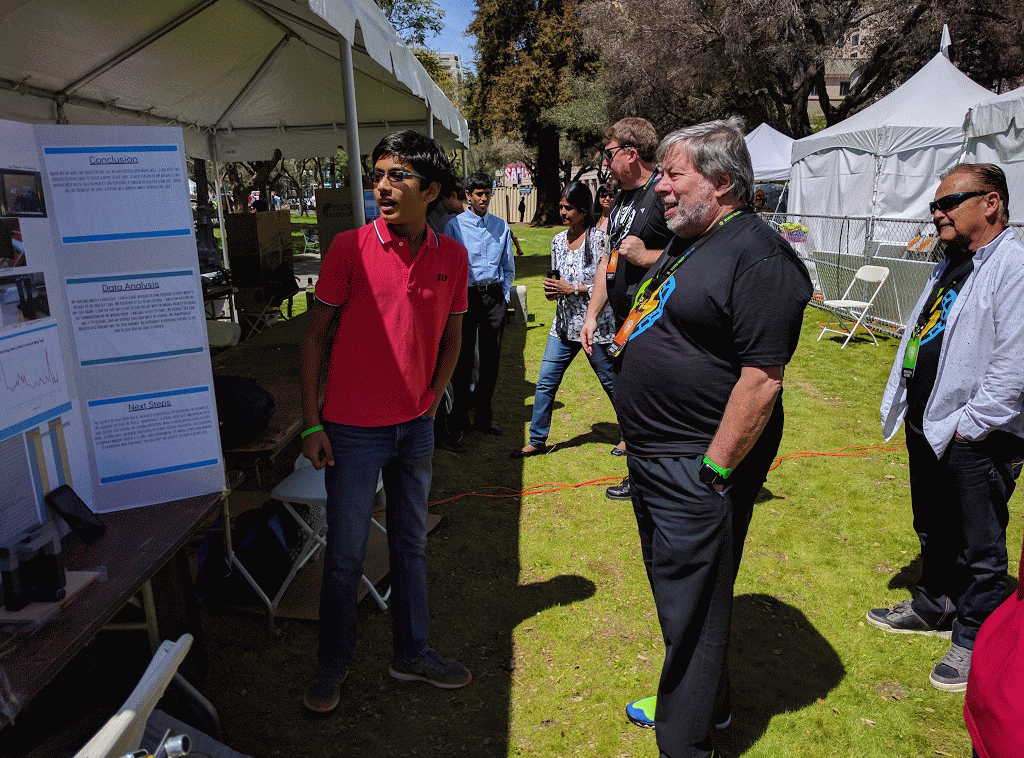
Locks all have the same general pitfalls, they are often:
- Pickable, although expensive locks can take slightly longer
- Rakable, although this is usually solved through varying the tension of the springs, which most locks do NOT do.
- Bumpable, bump keys allow you to open most pin and tumbler locks, which are the most common.
- Impressionable, through a relatively simple process, you can both decode and create a "key" for many locks. These do not have to be pin and tumbler locks.
- Bypassable, many common locks have well documented flaws
- Jiggable, skeleton keys have been used for hundreds of years, yet are still effective.
The reason that many of these methods work, is due to the manufacturing processes of the locks. These locks, even those that are theoretically unpickable, have manufacturing processes that allow the locks to be decoded. Given the low cost and familiar design that these locks must employ, it means that pretty much all locks are pickable.
A youtuber that was really helpful in explaining many of these concepts, while also creating interesting content was the LockPickingLawyer.
My goal, which was taken straight from my abstract was the following: "Build a prototype lock that replicates the multiple modes of operation common in today's smart locks, but one that is secure, and can be designed and printed with readily available tools and components such as 3D printers, magnets, Raspberry Pi, a simple DC motor, a hotel key card, and so on"
My methods and materials are the following:"TinkerCAD/Fusion 360 for 3D design of the lock. 3D Printer @ Dad's work for printing the lock. Strong magnets purchased online and glued to operate. Raspberry Pi and a self-soldered NFC reader to operate a DC motor, assembled with a number of step-up gears salvaged from Lego set. Python code samples and sample audio files found online to program Raspberry Pi and turn the motors with the tap of an NFC card key recycled from a hotel room key, and portable speaker to provide audio confirmation."
In order to build a working engineering prototype requires several iterations and precise connection between parts. For instance, turning a motor to move a lever by an exact amount requires computing how consistent and accurate the motor turns, and reducing the noise through a system of gears.
This project was really about overcoming a large number of engineering and design challenges in creating a repeatable locking mechanism that survived multiple iterations of testing to ensure it was reliable, quick to operate within 10 seconds, and allowed me to learn and explore several faculties, including programming a Raspberry Pi. I learnt a great deal about practical 3D design, one that can be used to create a solid working prototype. I also learnt how to accomplish a goal through trial, error, and discovery with online resources. I also solidified my communication and public speaking skills. I feel much more confident when communing with people I have never met, and people who I get extremely nervous around (like Woz).
Here are some photos that both highlight this incredible experience and highlight aspects of my lock.
